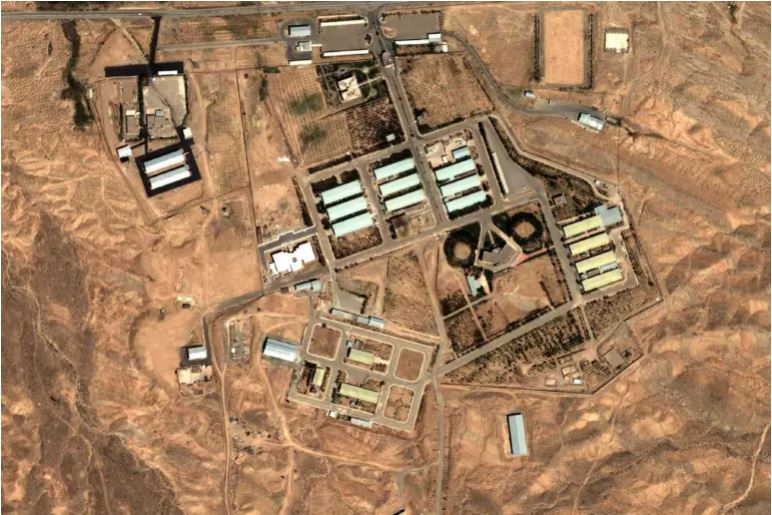Executive Summary
An escalation in Iran-Israeli tensions was prompted by two separate, suspected Israeli-linked operations inside Iran. On 22 May a senior IRGC member was assassinated in Tehran and on 26 May a suspected UAV strike targeted a military research site southeast of Tehran.. A second IRGC member was also reported dead under unclear circumstances on 2 June.
Israel did not confirm involvement, but unofficial claims of responsibilities were apparently leaked to the New York Times. Both operations are consistent with standing Israeli efforts to undermine the stalled JCPOA negotiations while demonstrating an enduring capability to target sensitive Iranian interests.
The potential for immediate Iranian revenge action should not be discounted and a threat warning released by Israel citing heightened Iranian intent to target Israeli nationals in the region remains a consideration.
An assessed increase in Iran-linked tensions has been observed regionally in recent weeks, prompted by two separate but suspected Israeli-linked operations inside Iran. On 22 May, a senior member of the Islamic Revolutionary Guard Corps, Colonel Sayad Kodae, was killed in broad daylight in Tehran. According to Iranian state-linked sources, the colonel was assassinated by two motorcyclists who opened fire in the vicinity of his residence. Kodae, who reportedly operated an IRGC unit in Syria for several years, was killed with five bullets shortly after entering his car.
The Israeli government characteristically refrained from commenting on the incident, but according to anonymous US officials cited by the New York Times, Israel acknowledged involvement in the assassination shortly after the incident. This is consistent with unofficial claims of responsibility apparently leaked deliberately by the Israeli military to US media outlets for assessed threat messaging purposes while maintaining plausible deniability. The New York Times report added that Khoae was operating a unit of the IRGC – Unit 840 – involved in the abduction and assassination of foreign nationals across the world, including Israeli civilians and officials. Iran denies the existence of the unit however government and military officials immediately blamed Israel for the assassination while pledging revenge in the days after the assassination. A funeral procession hailing Khodae as a martyr was also held in Tehran in the days after the incident.
In another suspected Israeli covert operation, a UAV strike involving several “quadcopters” reportedly targeted a military research facility approximately 60 kilometers southeast of Tehran on 25 May. Initial reports cited an accidental explosion at the site that killed one engineer, however a belated report – likewise published by the New York Times – said the event involved the impact of several so-called “suicide quadcopter” UAVs – a colloquial term used to denote less sophisticated, short-range explosive-carrying variants that crash into a designated target. Iranian official commentary was limited, however a statement by the Ministry of Defense later referred to the event as an “incident” and the deceased as a “martyr”, indicating a hostile operation as opposed to an accident. Unlike the killing of Colonel Khoae, Iranian officials have not publicly blamed Israel for the strike and Israeli officials have likewise refrained from acknowledging or commenting on the incident.
In a separate but potentially related development on 2 June, another IRGC colonel was reported dead in the city of Karaj, northwest of Tehran. State-linked channels said Col Ali Esmailzadeh died “in an incident” near his home, with separate reports claiming he fell from the roof of his house. Reports disseminated by Iranian media critical of the government claimed Emailzadeh was assassinated on 30 May by other members of the IRGC over accusations of espionage, and that his death was deliberately staged as a suicide. This was strongly denied by the government-linked sources and the IRGC. As usual, the veracity of these reports remain difficult to judge amidst conflicting political agendas of various channels and conflicting details. Unlikely the assassination of Khodae, Iranian officials have not blamed Israel for the incident however the proximity of the two events is noteworthy and further details are likely to be provided in hindsight.
Escalation linked to IRGC FTO designation, underscoring Israeli capabilities
The assassination and UAV strike represent an escalation in Israeli covert activities following a relative absence of high-profile operations observed in recent months. That said, both events are consistent with standing Israeli intent to undermine prospects for a restoration of the Joint Comprehensive Plan of Action (JCPOA) and likely intended to further sabotage the stalled negotiations. As widely reported, one of the key areas of disagreement pertains to the designation of the IRGC as a terrorist organization, and the timing of the assassination of a senior IRGC figure is not assessed to be coincidental. By highlighting Khoae’s role in Unit 840, the operation is plausibly intended to shed light on the activities of the unit with a view to undermine arguments in favor of lifting the FTO designation.
In a related development, the Israeli National Security Council published a threat warning on 30 May, urging Israeli nationals against all non-essential traveling to Turkey and other regional countries. The warning specifically cited elevated Iranian intent to conduct attacks against Israeli citizens in response to the assassination, implicitly referencing the potential for retaliatory operations conducted by Unit 840. While specifically referencing Turkey, the threat warning also cites an elevated threat level in other countries bordering Iran, plausibly a reference to the UAE and Bahrain where Israeli nationals now operate in greater numbers since the 2020 normalization of diplomatic and commercial ties. The veracity of the threat warning should not be discounted in light of recent Iranian rhetoric, but the report should also be viewed in the wider context of Israeli allegations of Iranian terrorism activities.
Assessed Israeli intent also includes a continued demonstration of capabilities to significantly damage sensitive sites and to target key personnel inside Iran. While circumstances remain sketchy, the reported UAV variants involved in the 26 May attack imply a launch point inside Iran, with the attack likely conducted by operatives recruited by Israel. Anonymous Iranian sources cited by the New York Times corroborated the claim without providing additional details, however this would further underscore Israeli capability to exploit flaws in the Iranian security infrastructure. To recall, in late 2020 suspected Israeli operatives targeted and killed prominent nuclear scientist Mohsen Fakrizadeh outside Tehran, and in March 2021 a sophisticated sabotage operation targeted the Natanz Nuclear Facility. The attack was reportedly conducted using explosives and set back progress on the site by several months, as part of a then accelerated Israeli campaign to damage the Iranian nuclear program.
Later that year, in June 2021, several UAVs also reportedly impacted a facility used for the storage and manufacturing of advanced centrifuges in Karaj. Limited reports of additional UAV strikes impacting sensitive storage sites were also circulated in July which, while plausible, remain unconfirmed amidst standing reporting challenges. Most recently, in February, multiple UAVs were reported to have targeted a UAV storage facility in Kermanshah, with Iranian-linked channels claiming the involvement of six long-range UAVs launched from within Iraqi territory. A ballistic missile strike targeting a villa owned by the owner of the KAR group in March was, amongst other motives, later discussed as a revenge act for the strike against the Kermanshah facility.
The potential for immediate Iranian revenge action should not be discounted and the threat warning discussed above remains a consideration in the region. Associated threat atmospherics were also highlighted by separate attacks targeting US-linked sites in Iraq this week, including a rocket attack against the Ain al-Assad Airbase and UAV strike against the Baghdad Diplomatic Support Centre in Baghdad. An unconfirmed rocket attack was also reported in eastern Syria over the previous week, citing the impact of multiple 122mm rockets near Coalition Forces based near al-Omar Oilfield in Deir Ez Zour.
Direct targeting of Israeli interests has not been recorded however, and it is worth noting that Iranian responses to covert Israeli activity have traditionally been delayed. By refraining from conducting immediate retaliatory attacks, Iran typically intends to deny Israeli efforts to provoke Iranian aggression in favor while maintaining a policy of strategic patience. Nonetheless, wider threat atmospherics are expected to remain elevated over the coming weeks in light of recent developments, and any associated Iranian responses will be worth monitoring closely.


